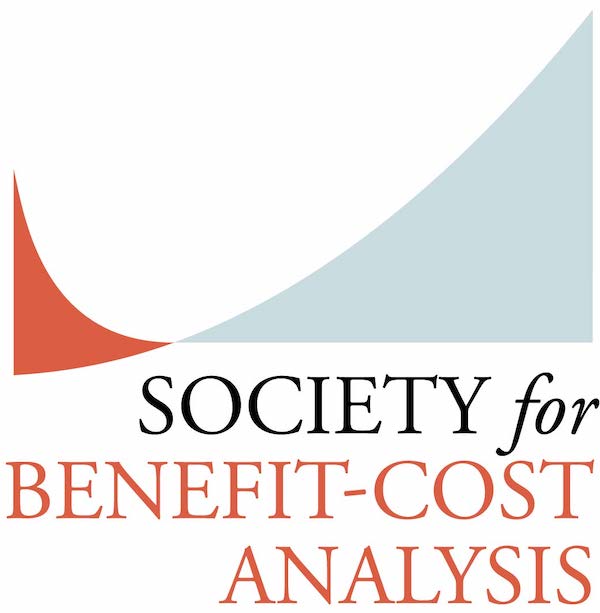On Balance: On EO 14192: “Unleashing Prosperity Through Deregulation” and Regulatory Budgets
 The views presented in On Balance are those of the authors and do not represent the views of the Society, its Board, or its members.
The views presented in On Balance are those of the authors and do not represent the views of the Society, its Board, or its members.
This post is part of a series on President Trump’s deregulatory record and what we might expect in the new administration.
Regulatory Budgets in Theory and Practice
Both Trump presidential campaigns and Administrations have emphasized deregulation. Recent SBCA blogs discuss whether the second Trump Administration will accomplish more regulation than the first and the implications for benefit-cost analysis in the recent flurry of regulation-related Executive Orders. This blog provides a deep dive into one aspect of one of the new EOs – the re-establishment of the first Trump Administration’s incremental regulatory budget, EO 14192. Used together with one-regulation-at-a-time BCA, the theory of the regulatory budget is to account for the cumulative cost burden, while also incentivizing agencies to review and remove old costly regulations. The practice of on-again, off-again regulatory budgets slows the growth of regulatory costs while they’re in place, but actually reversing cost growth and achieving net deregulation has been more challenging.
EO 14192: “Unleashing Prosperity Through Deregulation”
EO 14192 establishes two requirements for Federal agencies. First, for every new regulation, agencies are required to identify existing regulations to be eliminated. Second, agencies are required to offset the costs of new regulations with cost savings from deregulation. For fiscal year 2025, EO 14192 requires 10 deregulatory actions for every 1 new regulation and that the incremental regulatory costs “shall be significantly less than zero.” For fiscal years after 2025, the Office of Management and Budget will establish incremental cost budgets for each agency; an agency’s cost budget “may allow an increase or require a reduction in total regulatory cost.”
EO 14192 will be implemented in the regulatory analysis framework established by Clinton’s EO 12866, including the requirements for benefit-cost analysis. Under the recently released implementation guidance, for deregulations subject to BCA under EO 12866, agencies will be required to show that the benefits – the deregulatory cost savings – justify the costs – the social benefits foregone when the regulation is eliminated.
The 10-for-1 requirement has attracted a lot of attention. From an administrative law perspective, it is natural to focus on the number of regulations and deregulations, although the accounting can be complicated. This blog takes an economics perspective and focuses on the incremental regulatory cost budget.
Regulatory Budgets in Theory
During the deregulation era of the 1970s and 1980s, both policymakers and academics began to discuss the merits of a regulatory cost budget. The Carter Administration’s Council of Economic Advisers explained that just as the Federal fiscal budget “allows explicit tradeoffs to be made and the appropriate level of government action to be debated,” a regulatory budget provides “a framework for looking at the total financial burden imposed by regulations, for setting some limits to this burden, and for making trade-offs within those limits” (CEA 1980, p. 125). It has proven difficult to estimate the total burden imposed by the existing stock of regulations. Attention shifted to the incremental costs created by the flow of new regulations; but the principles of regulatory budgeting are the same.
First, the regulatory budget is a tool to set limits on total regulatory costs. The regulatory budget and BCA are in tension but not necessarily in contradiction. BCA should ensure that each enacted regulation’s social benefits exceed its costs, considering each regulation one-at-a-time. If each regulation passes a BCA, a regulatory budget might seem unnecessary and could even block net beneficial regulations. Although that is a real possibility, an argument for the regulatory budget is that it is needed when the total burden of regulatory costs is greater than the sum of its parts.
A stylized model helps explain why total regulatory costs might matter beyond the costs considered in one-regulation-at-a-time BCA. Consumers enjoy private goods and public goods. The government provides some public goods directly. Directly provided public goods are financed through taxation, imposing opportunity costs in the form of private goods consumption foregone. The government provides other public goods through regulation of the private sector, for example by requiring firms to change their manufacturing methods to reduce pollution. Regulation-provided public goods again impose opportunity costs from private goods foregone. Consumers’ diminishing marginal rate of substitution between private and public goods implies that as taxes and regulatory costs mount, the opportunity costs increase at an increasing rate. Put differently, as private goods become scarcer due to taxation and regulation, they become more valuable at the margin.
A related argument is that the regulatory budget helps control cumulative costs – the burden of complying with multiple and overlapping regulations. According to former OMB Office of Information and Regulatory Affairs Administrator Cass Sunstein, “Cumulative burdens may have been the most common complaint that I heard during my time in government.” (Sunstein 2014, p. 588) The Clinton and Obama EOs (12866 and 13563) on regulatory review use identical language to specify that each agency must “to the extent practicable” take into account the costs of cumulative regulations. However, the OMB Circular A-4 (2003, 2023) guidelines for regulatory review do not discuss cumulative regulatory costs. In principle, one-at-a-time BCAs might be able to estimate the regulatory costs of each new regulation while taking into account the cumulative costs of all regulations. As far as I know this is not standard practice, perhaps because it is not practicable for the individual agencies.
This brings us to a second perspective on the regulatory budget – as a tool to manage the tradeoffs involved in regulations across Federal agencies. If agencies regulate in the public interest, each will try to maximize the social benefits from pursuing its mission (e.g. environmental protection), subject to the constraint of its regulatory cost budget. If agencies regulate in their own economic interests, in order to grow in size and influence, agencies still have incentives to pursue their missions but, again, subject to the regulatory budget constraint. Of course, agencies are also subject to budget and staff constraints that can limit their effectiveness in pursuing their missions.
Under either theory of how regulatory agencies behave, when faced with an incremental cost budget, agencies will have incentives to advance their “best” regulations and eliminate their “worst” regulations, in terms of the regulations’ net benefits. Moreover, the OMB can consider regulations across all agencies and set each agency’s regulatory budget accordingly to advance the best and eliminate the worst.
Regulatory Budgets in Practice
Versions of regulatory budgets have been used in Canada, Denmark, the Netherlands, Norway, the United Kingdom, and of course, the first Trump Administration. OIRA reported that the present value of net cost savings from deregulation during the first Trump Administration (fiscal years 2017 through 2020) was $198.6 billion. Based on its own methodology and considering a broader set of regulations and deregulations, the American Action Forum estimated that over Trump’s first term regulatory costs exceeded cost-savings, imposing net regulatory costs of $112.3 billion.
To put the first Trump Administration’s regulatory cost record in context, the AAF estimates that regulatory costs during the first term of the Obama Administration totaled $493.6 billion and regulatory costs during the Biden Administration totaled $1.8 trillion. The regulatory cost accounting exercises are subject to the caveat that they are incomplete. Not all regulations and deregulations are subject to the EO 12866 requirements to complete BCAs. And for some regulations and deregulations covered by EO 12866 requirements, agencies do not provide cost estimates or do not fully quantify the costs or cost-savings.
Another intended consequence of the regulatory budget is to encourage retrospective review of the existing stock of regulations. Retrospective review is a long-standing goal for Federal regulatory analysis. The Clinton EO12866 requires each agency to “periodically review its existing significant regulations to determine whether any such regulations should be modified or eliminated….” President Obama issued EO 13563 on retrospective review and in his 2012 State of the Union address highlighted the elimination of a 1970s era regulation that treated spilled milk as a hazardous oil spill. A deregulation begun during the first Trump Administration and completed during the Biden Administration eliminated another 1970s era regulation that established product standards for frozen cherry pies. To go along with a glass of milk and a slice of pie, all told, OIRA reported that the first Trump Administration’s regulatory budget resulted in 538 deregulatory actions.
As Yogi Berra perhaps said, predictions are hard, especially about the future. While the second Trump Administration has more experience with regulatory budgeting, it also faces new challenges, some of its own making. Aggressive deregulation through the notice-and-comment rulemaking process might be hampered by agency staff cuts. The 2024 Supreme Court decision eliminating Chevron deference raises the bar for agencies to deregulate as well as to regulate. A more pro-regulatory future Administration could use the regulatory budget framework while setting a positive cost cap; yet presently, unless the regulatory budget is codified in legislation it is unlikely to survive.
